Library of Mapped Data Images
< Return to BIO Curriculum Step 1: Observation and Discussion
< Return to BIO Curriculum Step 3: Data Sketches
Age the of Seafloor
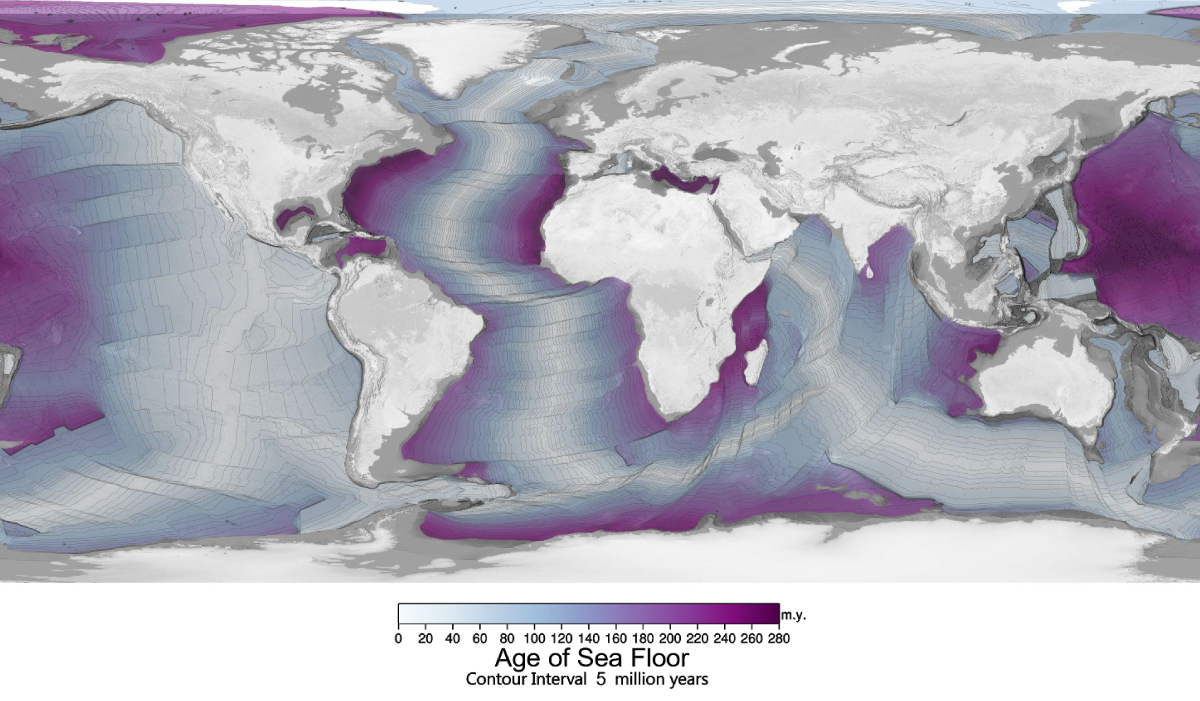
- Contour interval = 5 million years
- Legend 0 to 280 million years
Plate Boundaries - Colorized

- Convergent Boundaries: Plates collide, causing geological features like mountain ranges. For example, the collision between the Indian Plate and the Eurasian Plate created the Himalayas. Sometimes, one plate is forced under another in a process called subduction, forming ocean trenches and volcanic chains, such as those along the western coast of the United States.
- Divergent Boundaries: Plates move apart, allowing magma to rise and form ridges. The Mid-Atlantic Ridge, an underwater mountain range, is an example, formed by the separation of the North American and Eurasian Plates in the north, and the South American and African Plates in the south.
- Transform Boundaries: Plates slide horizontally past each other. The San Andreas Fault in California is a famous transform boundary responsible for many earthquakes.
Topography and Bathymetry

Earthquakes 6.5 or greater between 2001 - 2015
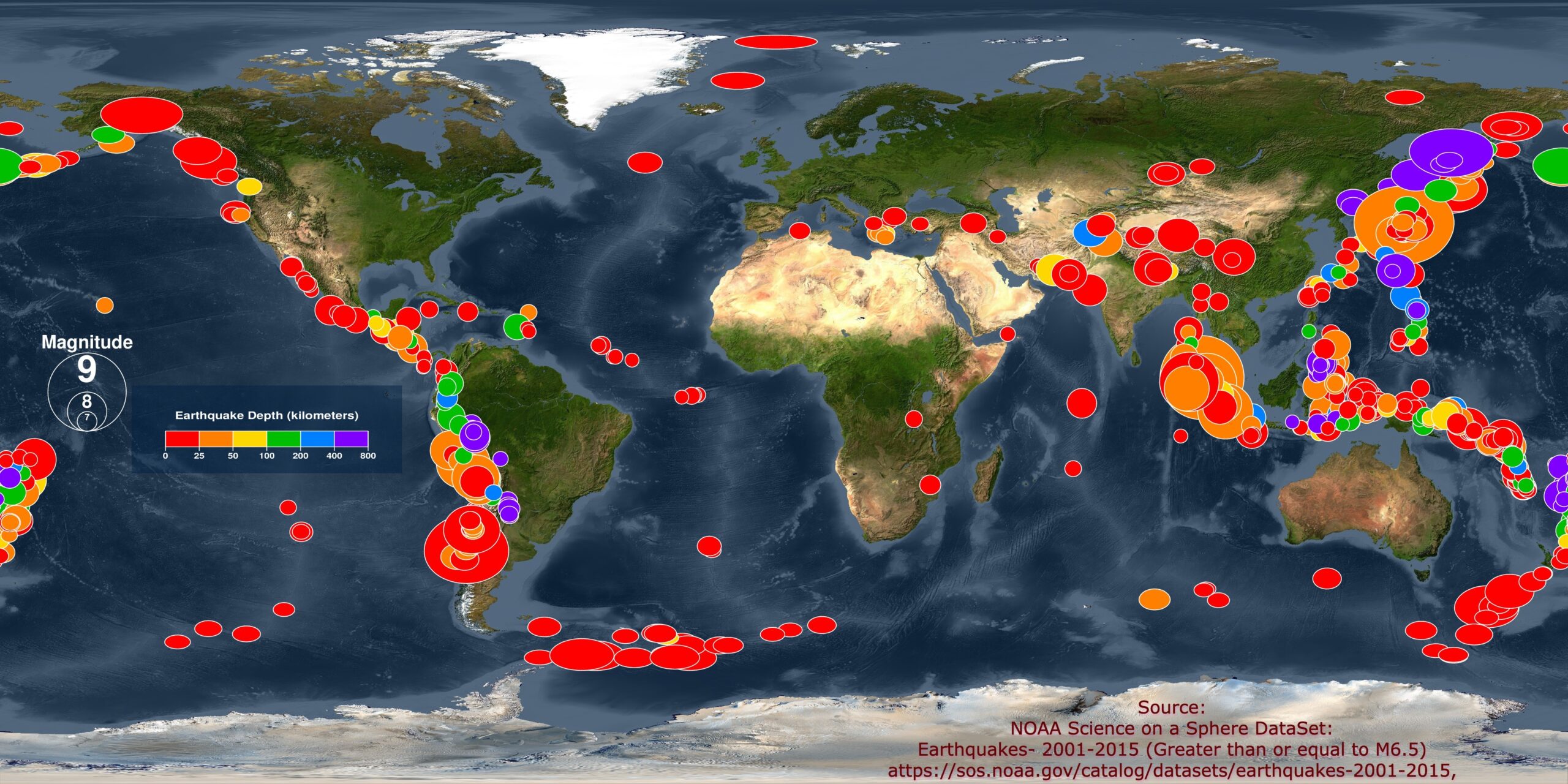
- Earthquakes 6.5 or greater between 2001 - 2015
Global Volcano Locations

Hurricane Tracks

- Years included: 1950 - 2020
Precipitation Ranking: U.S. - 2023

- 2023 Precipitation Ranking Statewide of 129 years
Temperature Maximum Ranking: U.S. - 2023

- Contour interval = 5 million years
- Legend 0 to 280 million years
Temperature Anomaly - Annual Average

- Annual Average - 2016
Temperature Anomaly - Monthly Average

- Monthly Average - June 2024
Drought Monitor - Aug 13, 2024

- August 13, 2024
Sea Surface Temperature

Category: Ocean, Life, Temperature, Seasons, Weather, Climate
Related Lessons/Units: Tides: Understanding Impacts on Human Activity Around the Globe
Related Data: Link(s)- (TBD)
Link to Source: NOAA View Global Data Explorer, NOAA Science On a Sphere
Sea Surface Temperature Anomaly - July 2023

- Monthly Average July 2023
Human Influence on Marine Ecosystems

Coral Bleaching - Degree Heating Weeks

- Convergent Boundaries: Plates collide, causing geological features like mountain ranges. For example, the collision between the Indian Plate and the Eurasian Plate created the Himalayas. Sometimes, one plate is forced under another in a process called subduction, forming ocean trenches and volcanic chains, such as those along the western coast of the United States.
- Divergent Boundaries: Plates move apart, allowing magma to rise and form ridges. The Mid-Atlantic Ridge, an underwater mountain range, is an example, formed by the separation of the North American and Eurasian Plates in the north, and the South American and African Plates in the south.
- Transform Boundaries: Plates slide horizontally past each other. The San Andreas Fault in California is a famous transform boundary responsible for many earthquakes.
- Weekly average - July 17-23, 2024
Loggerhead Sea Turtle Tracks
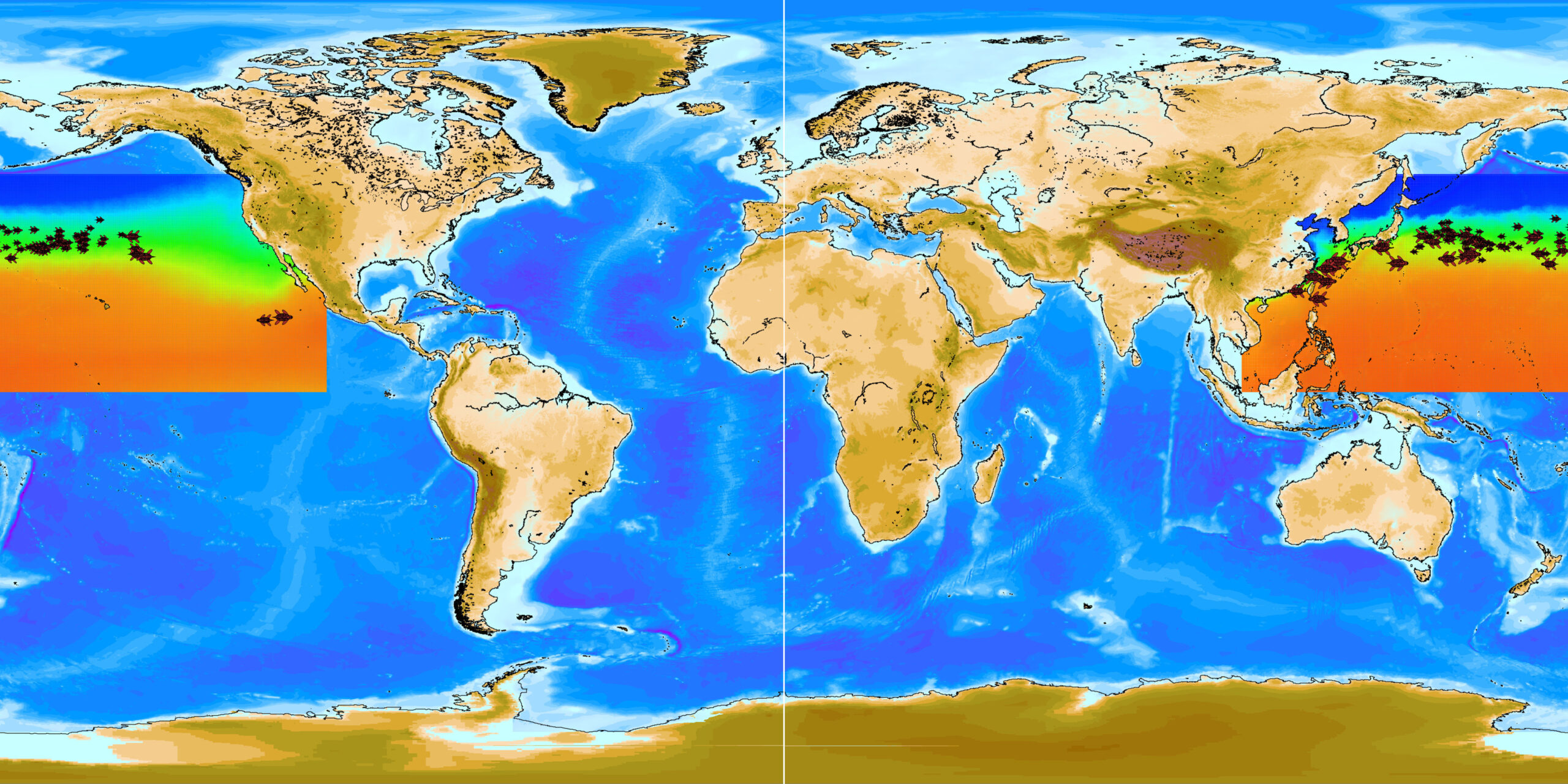
Fisheries Species Richness

Agriculture: Cropland Intensity

Agriculture: Pastureland Intensity

Agriculture: Cropland Production Gap

Forest Change - Gain and Loss

Bats - Projected Spread of White Nose Syndrome
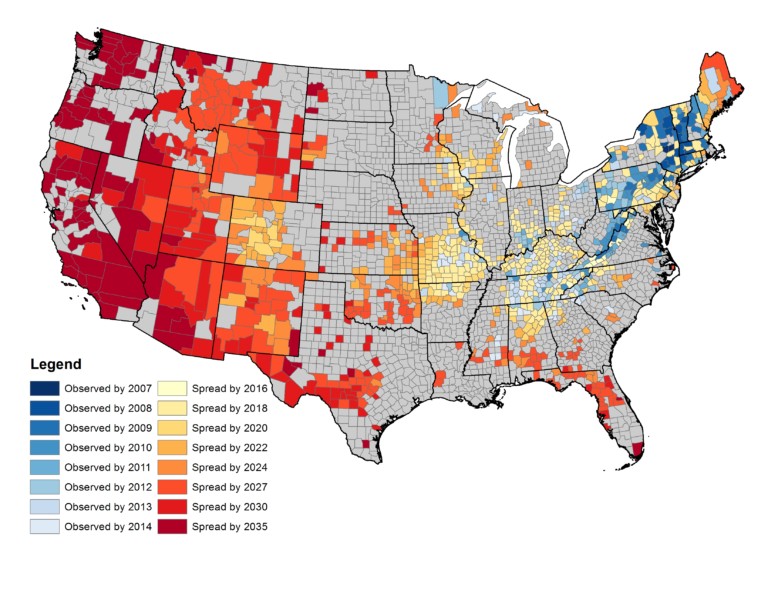
- 2007 to 2035
Bat Diversity in U.S. National Parks

Species Richness - Birds Threatened

Nighttime Lights - 2010
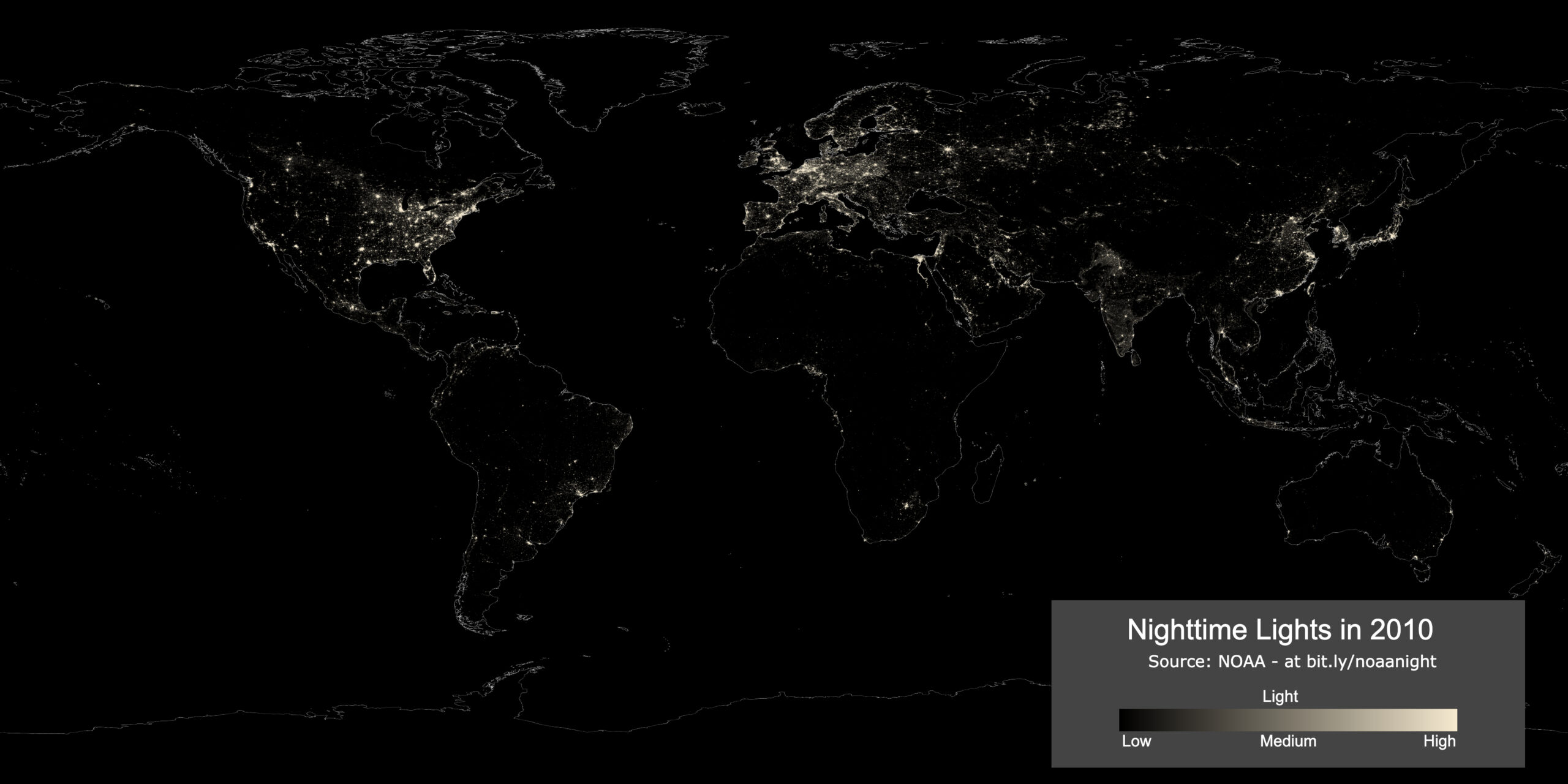
Freshwater Withdrawals: U.S. - 2010

Category: Freshwater, Population, Agriculture
Related Lessons/Units: Drought: Examining the Causes and Effects of Precipitation Shortage
Related Data: Link(s)- (TBD)
Link to Source: USGS
Dams and Reservoirs - 1800-2010

- 1800-2010
Population Density - U.S.

Population Density 2016

- 2016
Population by Country

Shipping Routes

Human Climate Niche 2020 & 2070

Light Pollution - Artificial Sky Brightness

Human Transportation

Vegetation - December 2022

Land Surface Temperature at Night - December 2022
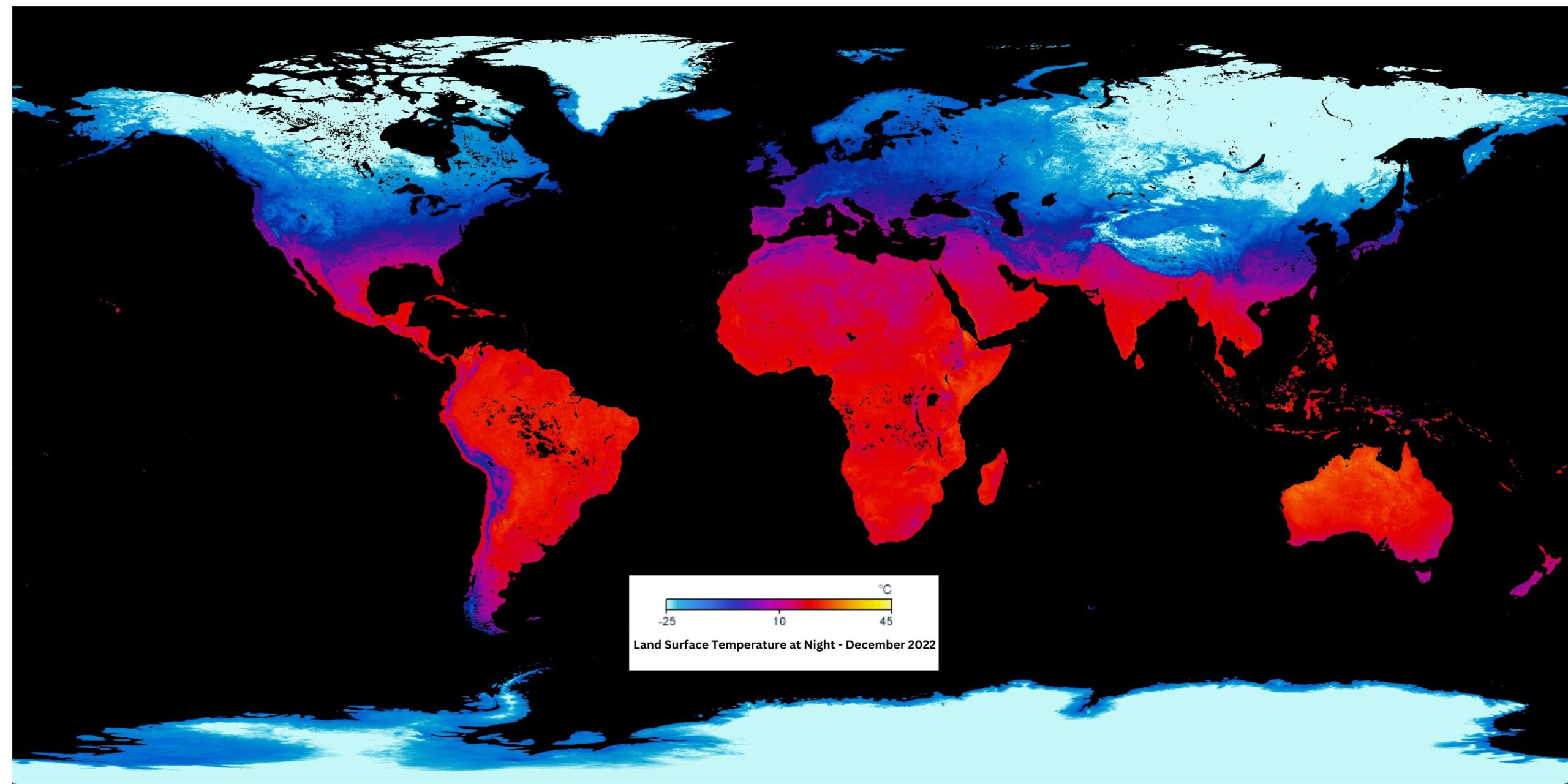
Agriculture: Food vs. Feed

Not all cropland is used for producing food directly for people. A lot of the food crops grown are actually used as feed for animals. This map shows which regions produce crops that are mostly consumed directly by humans (in green), which regions produce about the same amount of human food and animal feed (in orange), and where most of the crops are used as animal feed (in red).





